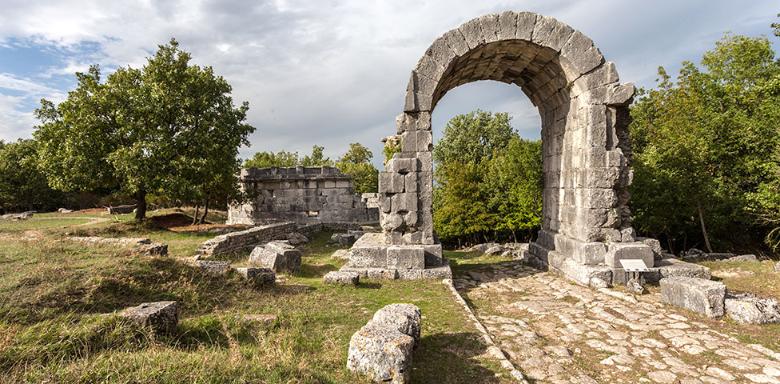In the first months of 1604, Federico retired within its walls, discouraged by his father's intolerant and unsympathetic attitude towards the activity of the Accademia dei Lincei. A few month before Federico had founded the Accademia with other friends.
Once the critical phase was over, the four founders, including Federico, gathered again in the rooms of the palace which, in 1618, became Federico's residence and the official seat of the Academy.
The quietness of the Umbrian countryside made the residence of the Cesi an ideal place for academic work and scientific research. In 1624 Galileo Galilei was also a guest in the palace of Acquasparta.
The building is accessible from the entrance hall leading to the ground floor rooms. From the porch, through a staircase, you reach the main floor. Here precious frescoes celebrate the illustrious origins and the great military virtues of the Cesi family. Beautiful coffered wood ceilings adorn the rooms. On the main floor, in the reception hall, the coffered ceiling is carved with figures of Hercules, trophies of arms and gargoyles.
Among the decorative paintings that illustrate the military exploits and the origins of the Cesi family, is the emblem of the Academy: the lynx surrounded by a laurel wreath.
On the ground floor the decoration of the rooms used for the Cesi's private lives draws on the rich mythological heritage, in particular by Ovid's Metamorphoses. All the decorations are considered among the greatest examples of Roman painting style in Umbria.
Contats/ Tourist Info (guided tours and activities):
FACEBOOK | E-MAIL: infopalazzocesi@gmail.com | cell: 351 703 1853
Bibliography
Martinelli Imbriani A. (1982), Contributo alla storia di Acquasparta, Roma, Edizioni Oddo.
T.C.I. (2004), Umbria, Milano, Touring Editore.



























.jpg/cef61178-1781-47c0-2f27-8aa34140004b?width=780)




